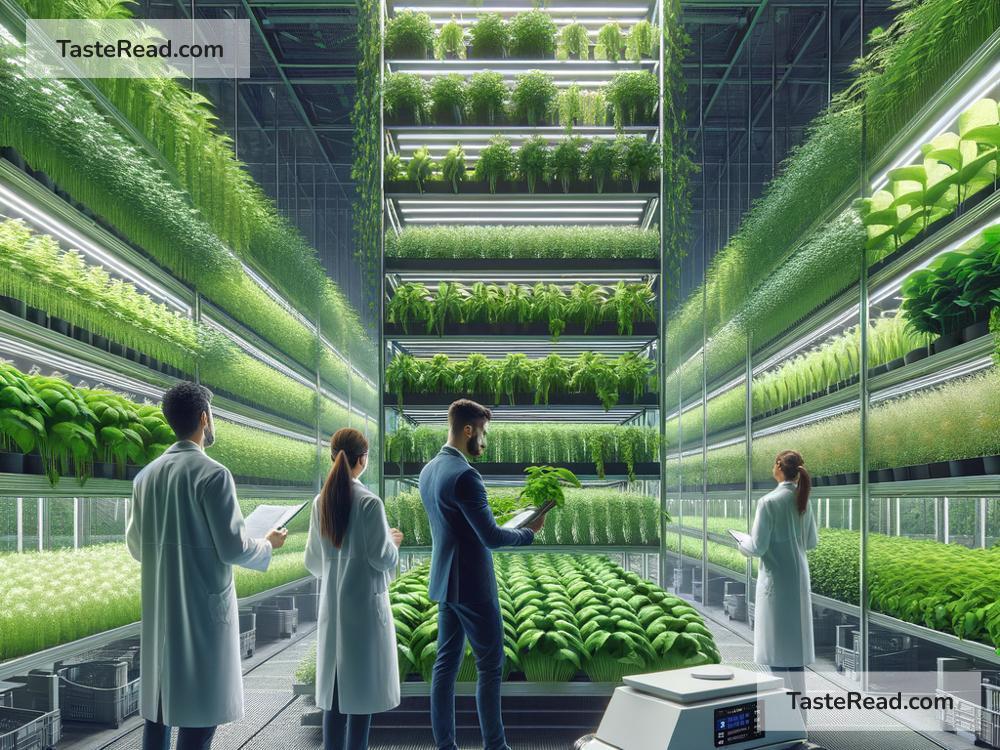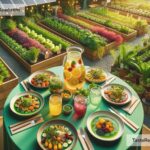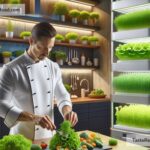The Future of Food and Sustainable Economic Models: A Simple Vision for a Better Tomorrow
Food is one of the most important things in our lives. Yet, as the global population grows and our planet faces unique challenges like climate change, we need to rethink how we produce, distribute, and consume food. At the same time, finding new ways to make our economy and food systems sustainable is key to creating a better future. In this blog, we’ll explore what the future of food might look like and how sustainable economic models can support it—all in simple terms.
The Problem With Our Current Systems
Today, many of the ways we produce food harm the planet. For example:
- Industrial farming often uses harmful chemicals and requires lots of water.
- Food transportation leads to higher carbon emissions as food is shipped across the globe.
- Waste issues: A huge portion of the food we grow ends up wasted, either because it gets spoiled or consumers throw it away.
On the economic side, traditional systems focus too much on profits rather than what’s good for people or the environment. This means small farmers often struggle to make a living, while large corporations control much of the food supply chain. These unsustainable practices not only hurt the environment but also keep millions of people locked in poverty.
If this continues, we’ll face more problems like shrinking natural resources, decreasing soil quality, extreme weather, and food shortages. It’s clear we need a fresh approach—one that balances the needs of humans and the planet.
Imagining a Future of Sustainable Food
The good news is that people around the world are already working toward solutions. The future of food could look very different—and much better—if we embrace new technologies, ideas, and sustainable practices. Here are some exciting possibilities:
1. Food That’s Locally Grown
In the future, we could shift away from shipping food thousands of miles and instead grow more food locally. Urban farming, for instance, allows communities to use rooftops, vertical gardens, and hydroponics (a method of growing plants without soil) to grow fresh vegetables right where people live. This reduces transportation costs and creates jobs.
Community-supported agriculture (CSA) programs could also become more popular. In these programs, farmers grow food specifically for local buyers who receive fresh produce every week. This direct connection between farmers and consumers supports local economies and reduces food waste.
2. Using Technology to Grow Sustainable Food
Technology will play a big role in making food production cleaner and more efficient. Smart farming, for example, uses drones, sensors, and artificial intelligence to help farmers grow crops using fewer resources like water and fertilizer.
Another breakthrough comes from lab-grown meat. Scientists can now grow meat in labs using cells instead of raising animals. This method requires far less land, water, and energy than traditional livestock farming—and it eliminates animal cruelty.
We’ll also see more of “plant-based meat” like burgers made from soy or pea protein. These meat alternatives taste just like the real thing but have a much lower environmental impact.
3. Reducing Food Waste
In the future, we could create systems that dramatically reduce food waste. For example, better packaging can keep fresh food from spoiling, while smart apps can help people plan meals so they buy exactly what they need. Restaurants and grocery stores might adopt more “food-sharing” programs where leftover items are donated to those in need instead of being thrown away.
Recycling food waste into compost or energy could also become common. Many companies are now turning discarded food into renewable energy, providing power for homes and businesses while keeping waste out of landfills.
Sustainable Economic Models to Support These Systems
To make food systems truly sustainable, we need better economic models—systems that balance profit with long-term environmental care and fairness for all. Here are a few ways to build a sustainable economy around food:
1. Circular Economy
A circular economy focuses on reusing resources rather than wasting them. In food systems, this could mean turning farm byproducts (like corn husks or fruit peels) into new materials or products instead of throwing them away. For example, some companies now make biodegradable packaging from food waste.
In a circular economy, people and businesses create far less waste while strengthening local economies by reusing resources.
2. Support for Small Farmers
Small farmers play a crucial role in growing diverse food and caring for the land. Governments and communities can support them by providing fair prices for their crops and offering training, tools, or loans. This ensures farmers can make a living while contributing to sustainable food production.
3. Public-Private Partnerships
Governments and private companies can work together in partnerships that bring investment and innovation to green food solutions. For instance, a government could fund research into sustainable farming practices, while private companies produce affordable lab-grown meat for consumers.
How You Can Help
Even small changes in your daily life can support the future of food. Here are a few ideas:
- Buy locally grown food whenever possible.
- Eat less meat or try plant-based alternatives.
- Reduce food waste by planning meals and saving leftovers.
- Support companies and farmers that prioritize sustainability.
A Balanced Future of Food
The future of food and sustainability is about balance—finding ways to meet human needs without destroying the planet. By combining innovative ideas like lab-grown meat, urban farming, and a circular economy, we can build a food system that feeds everyone while protecting the Earth for generations to come. It’s not just about what we eat—it’s about the choices we make to create a better world, one plate at a time.


